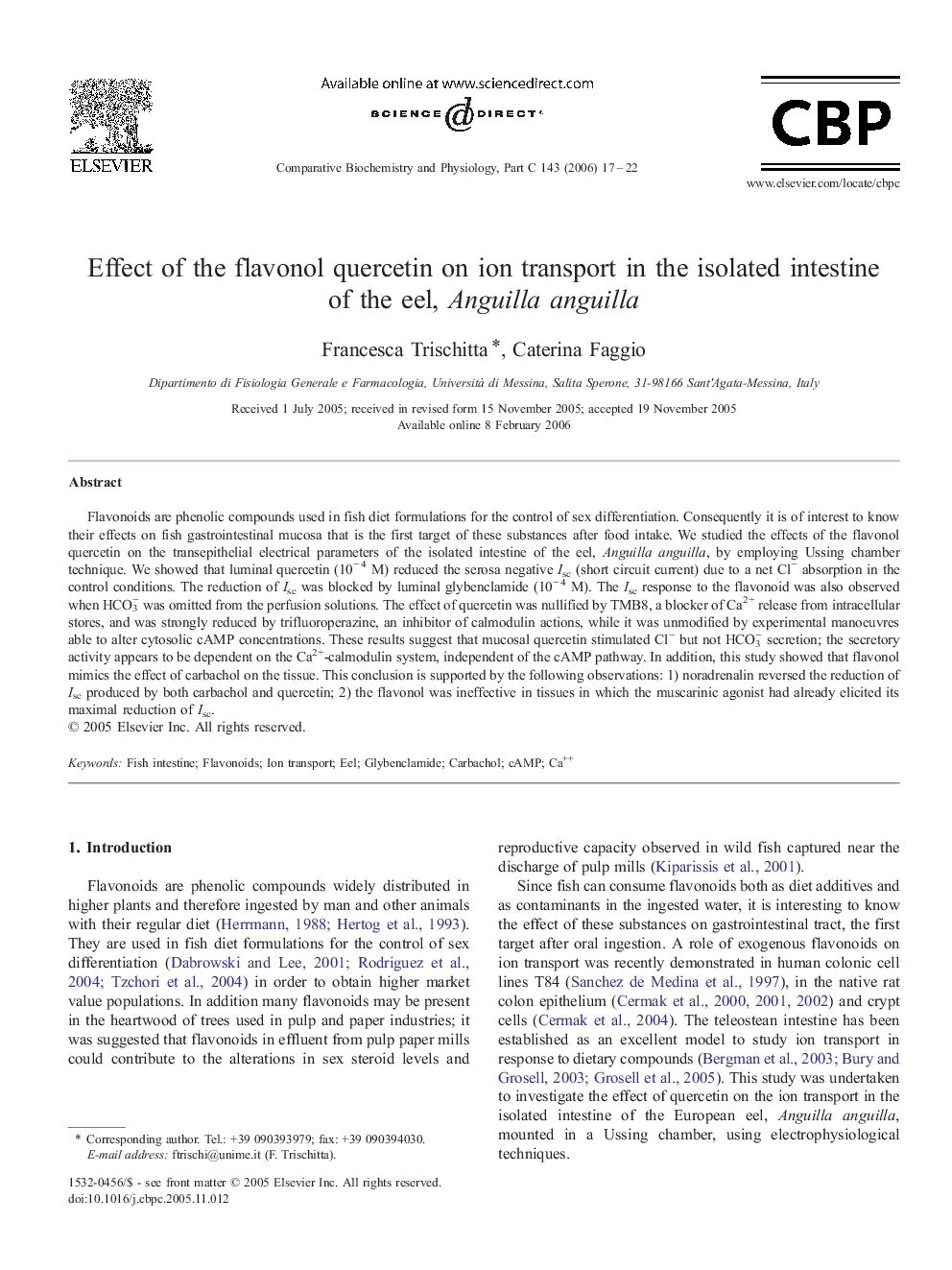| Article ID | Journal | Published Year | Pages | File Type |
|---|---|---|---|---|
| 1978204 | Comparative Biochemistry and Physiology Part C: Toxicology & Pharmacology | 2006 | 6 Pages |
Flavonoids are phenolic compounds used in fish diet formulations for the control of sex differentiation. Consequently it is of interest to know their effects on fish gastrointestinal mucosa that is the first target of these substances after food intake. We studied the effects of the flavonol quercetin on the transepithelial electrical parameters of the isolated intestine of the eel, Anguilla anguilla, by employing Ussing chamber technique. We showed that luminal quercetin (10− 4 M) reduced the serosa negative Isc (short circuit current) due to a net Cl− absorption in the control conditions. The reduction of Isc was blocked by luminal glybenclamide (10− 4 M). The Isc response to the flavonoid was also observed when HCO3− was omitted from the perfusion solutions. The effect of quercetin was nullified by TMB8, a blocker of Ca2+ release from intracellular stores, and was strongly reduced by trifluoroperazine, an inhibitor of calmodulin actions, while it was unmodified by experimental manoeuvres able to alter cytosolic cAMP concentrations. These results suggest that mucosal quercetin stimulated Cl− but not HCO3− secretion; the secretory activity appears to be dependent on the Ca2+-calmodulin system, independent of the cAMP pathway. In addition, this study showed that flavonol mimics the effect of carbachol on the tissue. This conclusion is supported by the following observations: 1) noradrenalin reversed the reduction of Isc produced by both carbachol and quercetin; 2) the flavonol was ineffective in tissues in which the muscarinic agonist had already elicited its maximal reduction of Isc.
